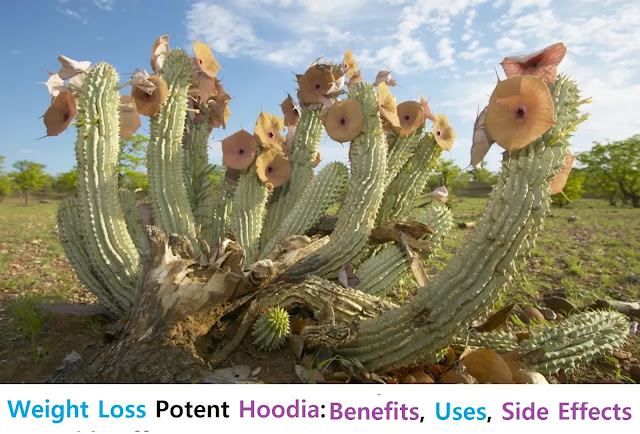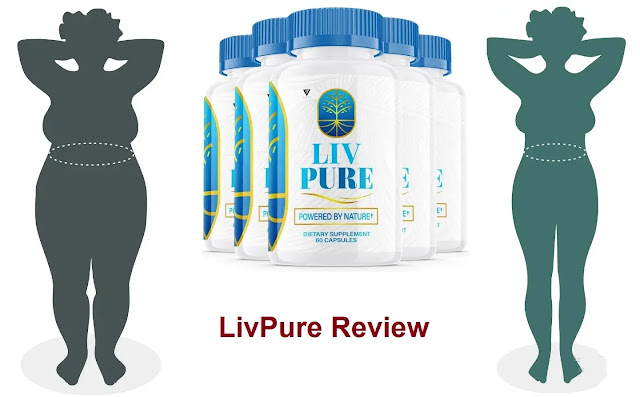
1- What is hoodia?:
One promising approach in the war on obesity is the use of appetite suppressants. Hoodia Gordonii is a natural appetite suppressant that has gained the interest of the general population and companies worldwide due to its effectiveness and apparent safety.
Internationally, more than 20 patent applications have been registered related to Hoodia Gordonii and the marketplace has seen an influx of products containing Hoodia.
Hoodia Gordonii is a succulent, or water-retaining, plant that is native to several African countries, including South Africa. The indigenous people there have a long history of using the plant to suppress appetite during hunting expeditions to the Kalahari Desert.
Studies have been conducted to understand the properties that enhance feelings of satiety, or fullness. The active ingredient seems to be an oxypregane glucoside, which has been given the name P57.
Experiments conducted on rats demonstrated that the active ingredient of Hoodia Gordonii affects the hypothalamus, a component of the central nervous system that plays an important role in the regulation of feelings of hunger.
It has been postulated that the P57 molecule affects the neurons in the hypothalamus that control food intake. The rats used in the experiment showed anorectic activity (consumed less food) after being injected with P57.
Regarding safety, no deleterious effects were reported during the animal studies.
Phytofarm has conducted short-term studies in human subjects, which confirmed that the plant extract was tolerated well.
Furthermore, since pure Hoodia appeared on the market several years ago, hardly any reported safety issues or side effects have been related to its consumption.
Finally, a centuries-long use by the Kalahari Bushmen seems to indicate an absence of health-threatening side effects.
2- Scarcity of Hoodia Leads To Adulteration:

Hoodia is native to South Africa, Namibia, Botswana and Angola, and does not grow well in other regions. It takes five years for the plant to fully mature. Only mature plants have the P57 molecules in concentrations sufficient to justify commercial extraction. In order to ensure sustainability over the long term, plants can only be harvested biennially.
Since over-harvesting has threatened the survival of Hoodia Gordonii, CITES (the Convention of International Trade in Endangered Species) and the South African government have limited its export. Simultaneously, demand is rising for natural weight loss preparations containing Hoodia Gordonii.
Hoodia Gordonii has been processed into over a 100 different products that are marketed in the U.S. These include: capsules, powders, tablets, liquid gels, tinctures, snack bars, lollipops, protein shakes, juice, coffee and tea.
Because the demand for genuine Hoodia Gordonii is greater than the supply, the adulteration of the product by inert and ineffective ingredients is a foregone conclusion. A peer-reviewed study conducted in 2008 at the University of Mississippi analyzed 35 diet supplements that claimed pure H. Gordonii as their active ingredient. Only 9 of the supplements contained detectable quantities of P57, amounting to an adulteration rate of 75%.
This gives the fake Hoodia market the distinction of being among the most disingenuous and corrupt divisions of the natural health industry. Nevertheless, within the Hoodia market are companies that are honestly operated and that seek out legitimate sources for purchasing genuine H. Gordonii. It is important to understand how these legitimate enterprises can be identified in order to avoid buying adulterated Hoodia products.

Genuine Hoodia Gordonii has a certificate of authenticity attached to the packaging. The CITES certificate documents a company’s permission to export H. Gordonii from Africa. This guarantees that the product’s active ingredient is derived from the indigenous South African plant. Authentic Hoodia requires this document to be exported legally from South Africa. The next guarantee of purity is made by independent laboratory tests. Since adulteration of Hoodia products has become commonplace, authentication techniques are vital to determine product purity and safety. One reputable laboratory is Alkemist Pharmaceuticals. The lab offers an effective approach that analyzes purity by three distinct testing protocols. This approach uses the guidelines published by the American Herbal Products Association regarding the identification and measurement of purity of raw powdered materials labeled as the stems of Hoodia Gordonii.
Identification Method 1: Microscopy
The aerial, or above-ground, parts of the Hoodia plant are where the anti-obesity compounds are located. A trained microscopist is able to identify components that are inconsistent with the traits of the Hoodia species.Opuntia is a common adulterant. Maltodextrin is a food additive that is also reliably detected through microscopy.
The microscopic analysis certificate will have wording to the effect of “The test sample was characteristic of the aerial parts of Hoodia Gordonii.”
While microscopy is a reliable method for identifying foreign material, it cannot be used as the sole method for determining the purity of H. gordonii stems.
This is because of microscopy’s inability to differentiate between related species with similar cellular structures, such as the succulent plant that is native to India, Caralluma Fimbriata.
Identification Method 2: TLC (Thin Layer Chromatography)
TLC is a powerful tool for identifying pure H. Gordonii. Each plant, whether Hoodia or another species, is composed of chemical compounds. TLC analyzes these compounds for a “chemical fingerprint” – the unique visual profile of the plant.
When comparing the profile of authentic Hoodia material with that of a possible imposter, the two fingerprints must be identical to pass the test of authenticity. The TLC certificate will have words to the effect that, “Hoodia Gordonii, authenticated via TLC, matches the specimen at Alkemists Pharmaceuticals.”
Identification Method - 3: HPLC (High-Performance Liquid Chromatography)
To date, the only active ingredient that has been identified in H. Gordonii is the molecule P57. Hoodia products lacking this component cannot be said to offer any weight loss benefits. HPLC is a technique devised by chemists to isolate and identify a specific compound found in an examined solution. HPLC is used to confirm the presence of P57 in the substance that claims to be pure Hoodia.
Chemical compounds are extracted from the substance and are inserted into a chromatographic column, a kind of pressurized tube. Chemical compounds move through the tube at different rates, according to their chemical makeup. P57 has a specific transit and exit time.
If the examined substance contains no P57, then no compound will leave the tube at the exact “P57 exit time.” However, if P57 is present, then it will be detected when it makes its exit at the appointed time. An HPLC certificate will guarantee that “Analyte P57 detected.”
Conclusions
The aerial, or above-ground, parts of the Hoodia plant are where the anti-obesity compounds are located. A trained microscopist is able to identify components that are inconsistent with the traits of the Hoodia species.Opuntia is a common adulterant. Maltodextrin is a food additive that is also reliably detected through microscopy.
The microscopic analysis certificate will have wording to the effect of “The test sample was characteristic of the aerial parts of Hoodia Gordonii.”
While microscopy is a reliable method for identifying foreign material, it cannot be used as the sole method for determining the purity of H. gordonii stems.
This is because of microscopy’s inability to differentiate between related species with similar cellular structures, such as the succulent plant that is native to India, Caralluma Fimbriata.
Identification Method 2: TLC (Thin Layer Chromatography)
TLC is a powerful tool for identifying pure H. Gordonii. Each plant, whether Hoodia or another species, is composed of chemical compounds. TLC analyzes these compounds for a “chemical fingerprint” – the unique visual profile of the plant.
When comparing the profile of authentic Hoodia material with that of a possible imposter, the two fingerprints must be identical to pass the test of authenticity. The TLC certificate will have words to the effect that, “Hoodia Gordonii, authenticated via TLC, matches the specimen at Alkemists Pharmaceuticals.”
Identification Method - 3: HPLC (High-Performance Liquid Chromatography)
To date, the only active ingredient that has been identified in H. Gordonii is the molecule P57. Hoodia products lacking this component cannot be said to offer any weight loss benefits. HPLC is a technique devised by chemists to isolate and identify a specific compound found in an examined solution. HPLC is used to confirm the presence of P57 in the substance that claims to be pure Hoodia.
Chemical compounds are extracted from the substance and are inserted into a chromatographic column, a kind of pressurized tube. Chemical compounds move through the tube at different rates, according to their chemical makeup. P57 has a specific transit and exit time.
If the examined substance contains no P57, then no compound will leave the tube at the exact “P57 exit time.” However, if P57 is present, then it will be detected when it makes its exit at the appointed time. An HPLC certificate will guarantee that “Analyte P57 detected.”
Conclusions
Anecdotal, real-life experience combined with sound scientific evidence shows that Hoodia Gordonii is a safe and natural supplement exhibiting anorectic properties.
The unfortunate fact is that approximately three in four of the products claiming to be authentic Hoodia are fake, both those sold on the Internet or through health food stores. Hoodia prices Whether the deception is intentional or not is immaterial.
When buying products containing Hoodia, it is important to take the first step of seeking current, independent testing certificates. However, in the age of digital manipulation, the reproduction of Hoodia certificates is not beyond the realm of the imagination.
Unique Hoodia holds both an Organics Annex Certificate and medical endorsements. The UniqueHoodia supplement contains only 100% pure Hoodia Gordonii, causes zero unwanted effects, efficiently suppresses your hunger craving and ensures great weight loss results. And yet, when using Hoodia or any weight loss supplement, it’s important to remember that appetite suppressants should not be thought of as a magic bullet, and should only be used in conjunction with a healthy lifestyle.




.webp)



.webp)


Social Plugin